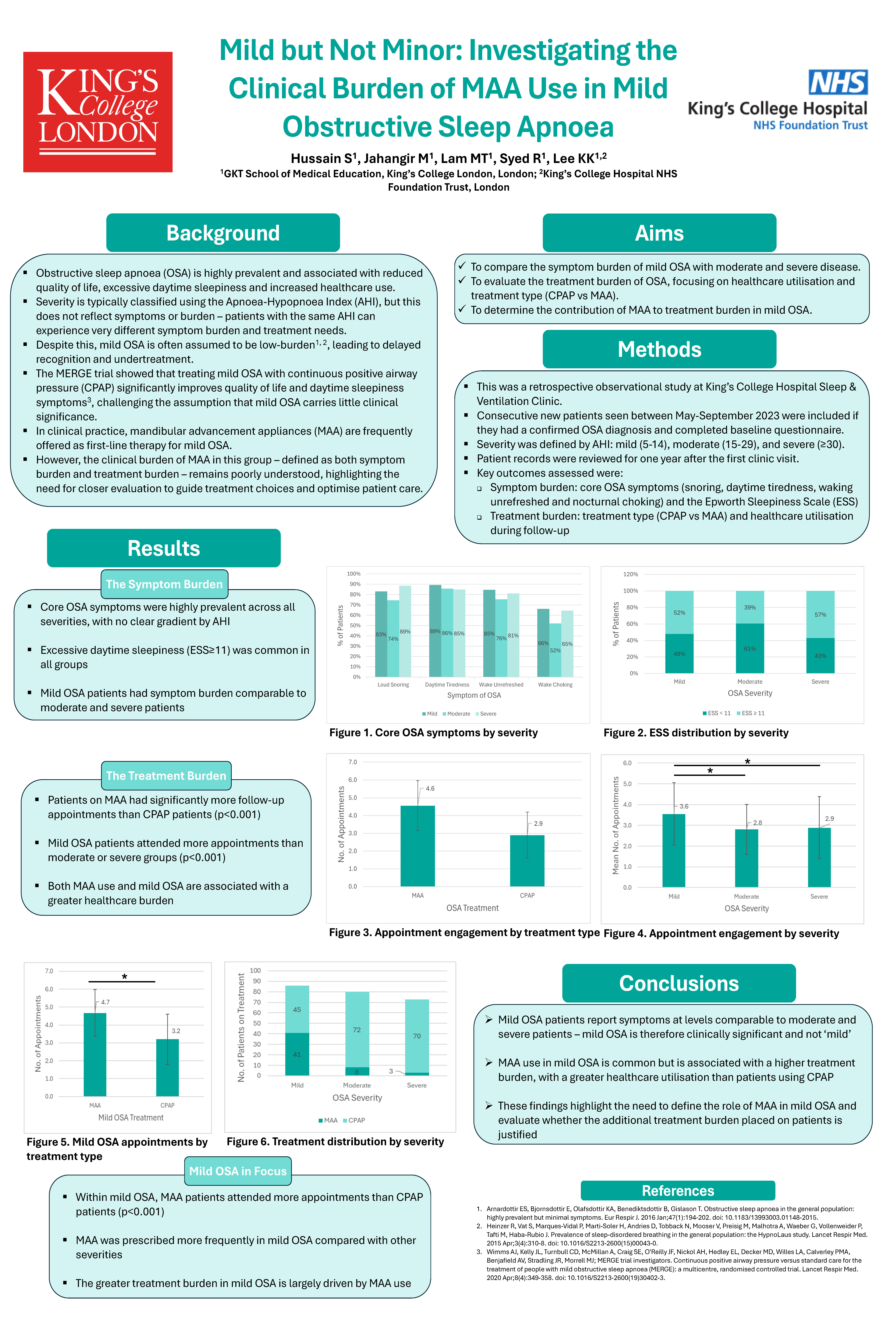Mild but Not Minor: Investigating the Clinical Burden of MAA Use in Mild Obstructive Sleep Apnoea (ID 617)
GKT School of Medical Education
Abstract
Background and Aim
Obstructive Sleep Apnoea (OSA) is a common sleep disorder with significant symptom burden. Mild OSA is often assumed a lower symptom burden and healthcare utilisation than moderate and severe (1), which may overlook true patient experiences. Recent findings, including the MERGE trial, support a symptom-based approach to treatment over AHI-based alone. This study compares the symptom and treatment burden of mild OSA with moderate and severe OSA.
Methods
A retrospective analysis at a central London sleep centre for all patients newly diagnosed with OSA over a 5-month period. Inclusion criteria consisted of a confirmed OSA diagnosis and completion of a clinical sleep symptom questionnaire. Symptom profile, treatment modality (continuous positive airway pressure [CPAP] or mandibular advancement appliance [MAA]) and healthcare utilisation data were analysed and compared across severity groups.
Results
307 patients were identified. Mean age was 51 years (SD 14); median BMI was 33.5 (IQR 10.4); 68% were male (n=210). The most reported symptoms among 307 patients were feeling “tired, fatigued or sleepy” during daytime (88%), snoring loudly (83%) and unrefreshed morning wakening (82%) (Table 1). 42% of the study cohort had mild OSA (n=130), 32% moderate (n=98) and 26% severe (n=79). Symptom prevalence did not differ across severity groups (p=0.155-0.810). Excessive daytime somnolence (Epworth Sleepiness Score ≥11) was present in 52% of patients with mild OSA, 39% of moderate and 57% of severe OSA (p>0.05). Treatment provision varied by severity: 88% of the severe group received CPAP, 69% of moderate and 31% of mild; 29% of the mild group received MAA versus 6% of moderate and 2% of severe. Healthcare visit burden in the first year was significantly higher in mild OSA patients than other severities (3.6 mean appointments vs 2.8 and 2.9, p<0.001), predominantly due to MAA treatment, shown in further analysis.
Conclusions
Our study showed that patients with mild OSA experience a symptom burden comparable to those with moderate or severe disease. Healthcare visit burden was higher in this cohort. Our findings highlight the limitations of AHI-based definitions in estimating clinical burden and the often under-appreciated impact for patients with mild OSA.
Funding: None
Conflicts of interest: None
